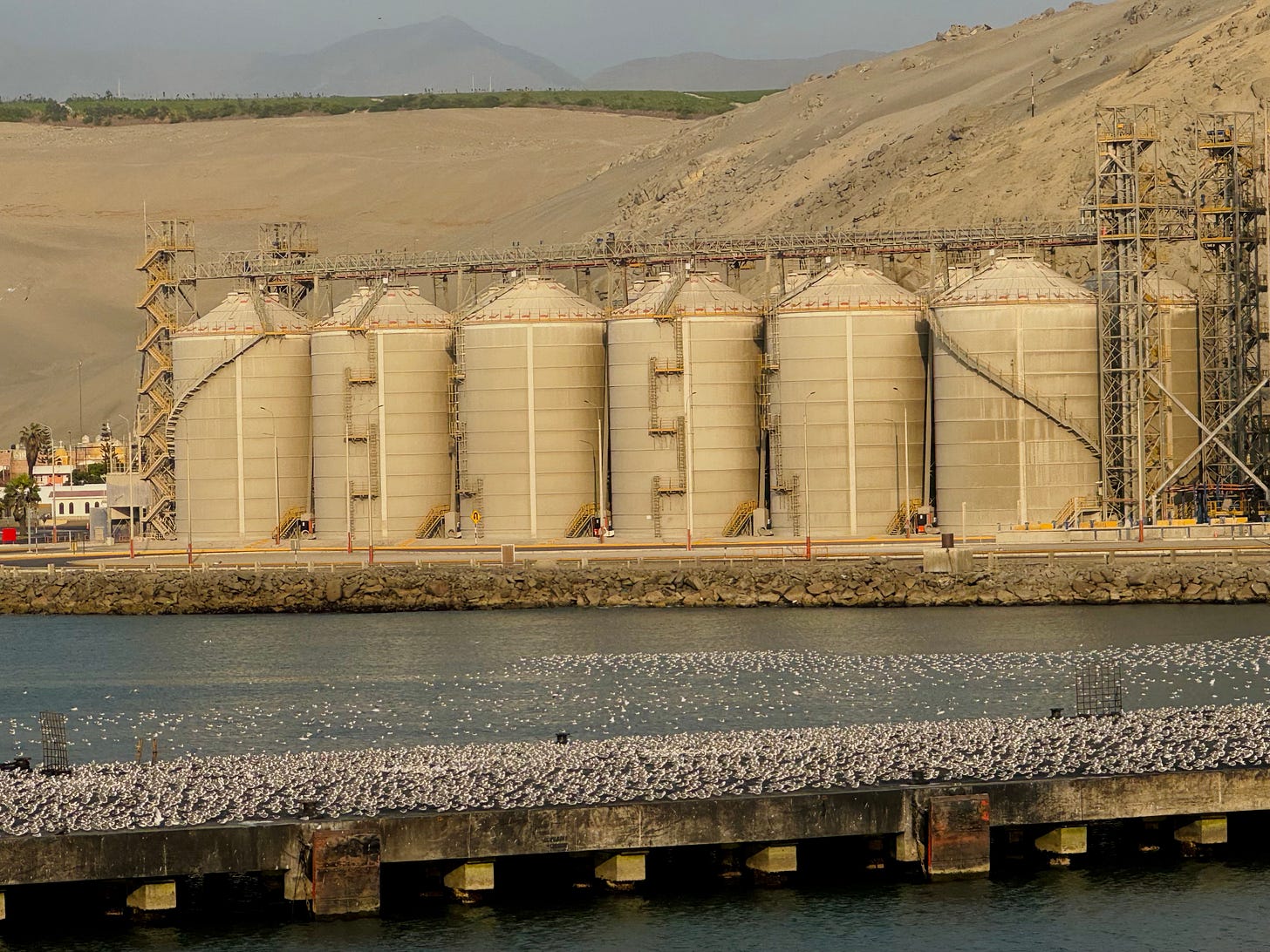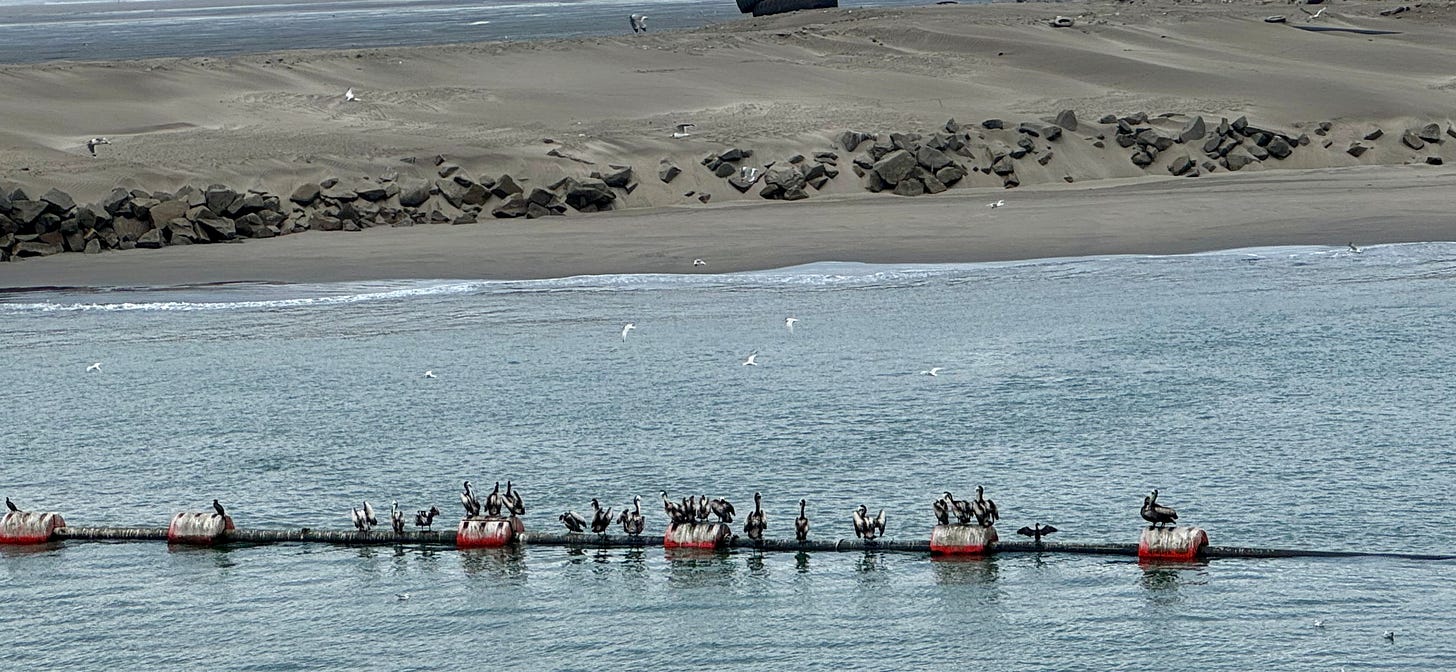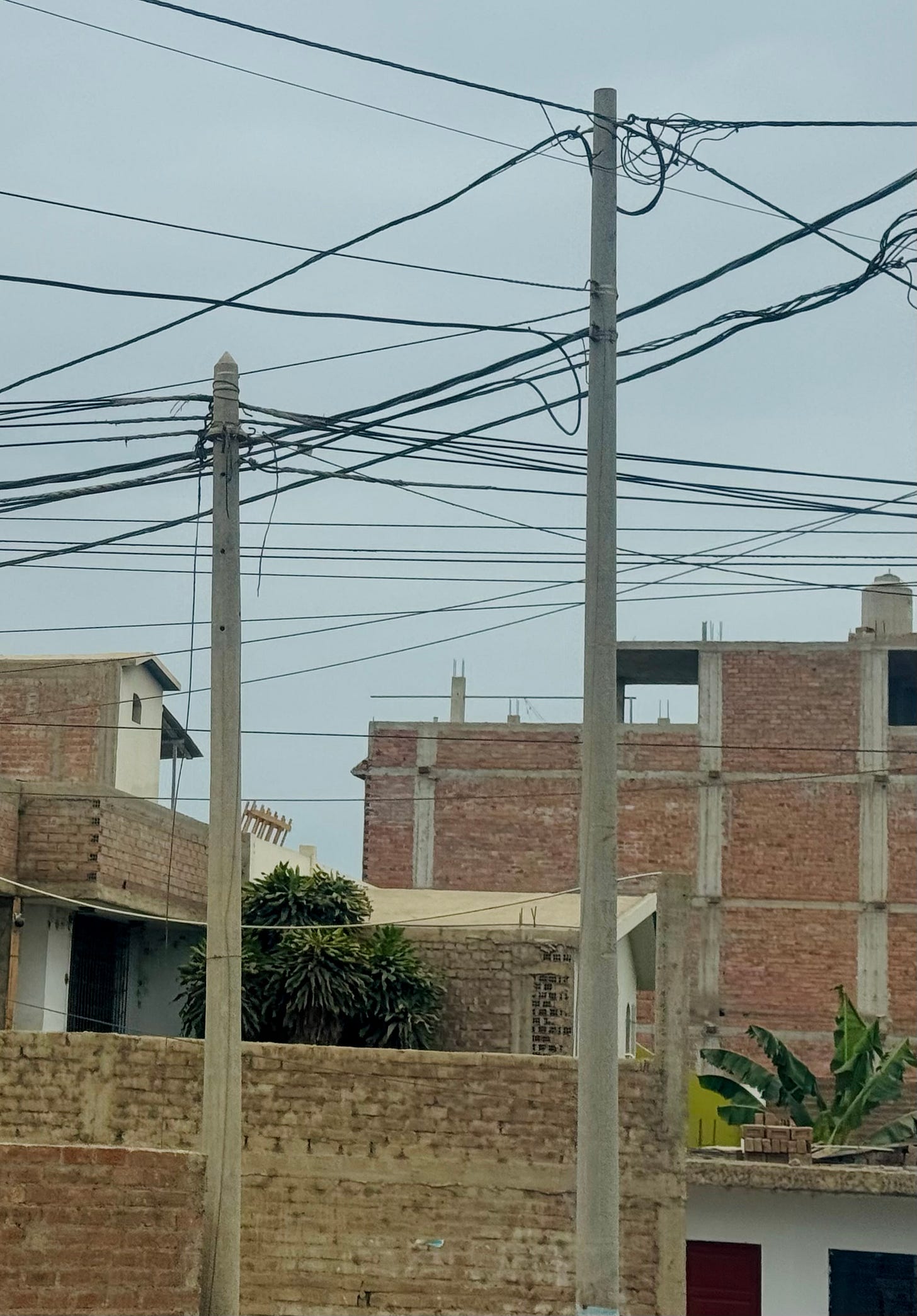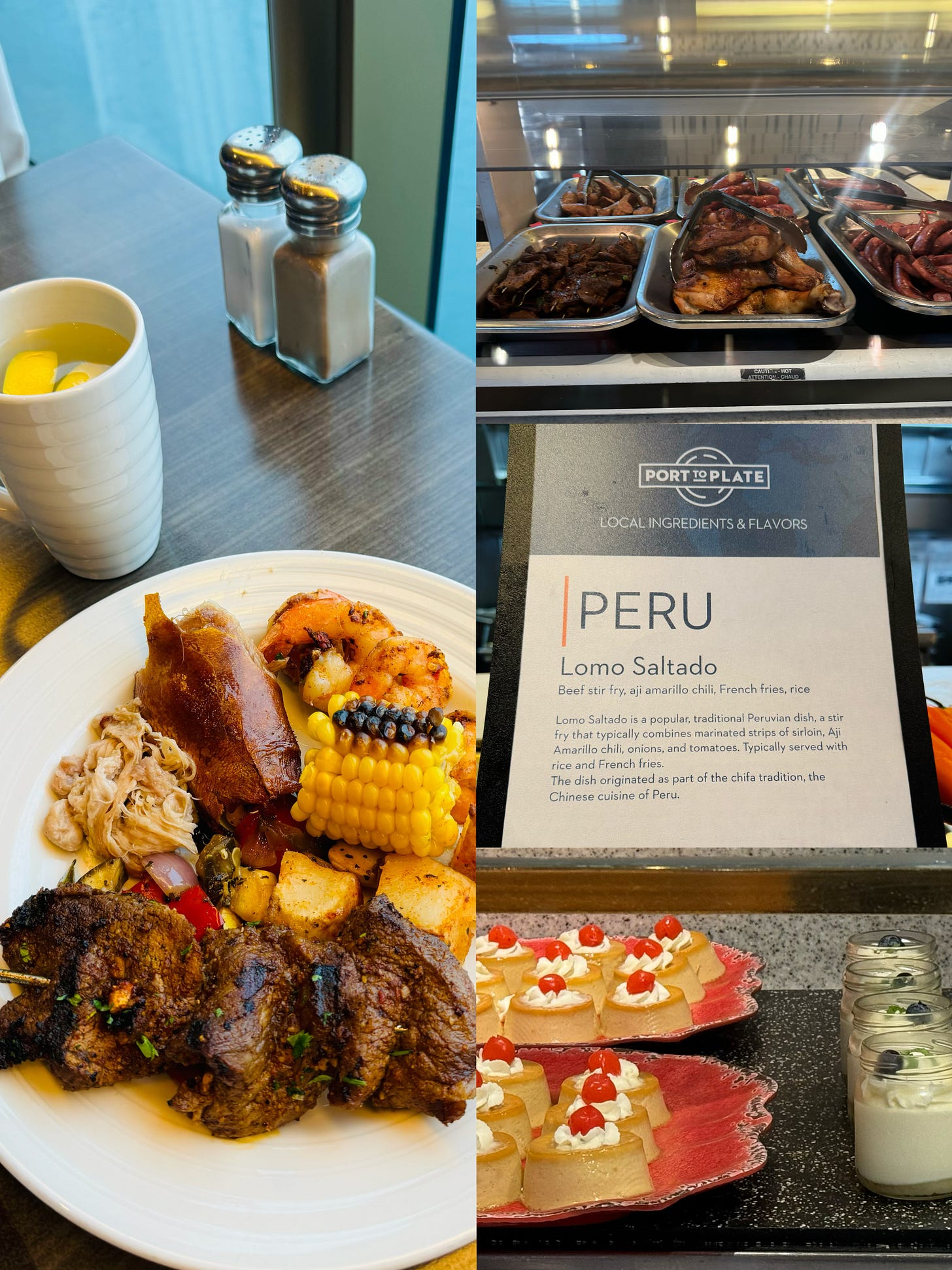Trujillo, Peru, a Journey through History, Culture and Life Reality
South America Cruise Diary (November 23, 2024)
November 23, 2024
Around 8:00 this morning, the Oosterdam arrived at Salaverry Port in Trujillo, Peru. The ship was scheduled to depart at 5 p.m., continuing its journey to Callao (Lima), where we would arrive the following afternoon. There, we would have three days and two overnights to explore this ancient and historically rich country on the western coast of South America.
The first thing I noticed after stepping out of my cabin was thousands of beautiful birds flying around and perched on the rocky shoreline—an incredible sight! Bird lovers would have been thrilled by this natural spectacle.

One key takeaway from yesterday’s talk was that South America, despite its rich history and vibrant culture, has not heavily invested in tourism infrastructure. Many of the ports on our itinerary lack adequate facilities, and Salaverry Port was no exception. As a commercial cargo port, it has no cruise terminal, and passengers are not allowed to walk freely within the port. We had two options: take the Holland America Line (HAL) shuttle bus (free ride) to Plaza de Armas, where we could hail a taxi or Uber, or join a shore excursion ($30/person) that would transport us directly from the gangway to the city centre. We opted for the latter.
The ride from the port to downtown Trujillo took about 45 minutes. Along the way, I saw unfinished buildings and streets littered with rubbish. The visible poverty and underdevelopment were striking, making me appreciate the privileges of life in Canada even more.
I didn’t understand why many some Peruvians to live in houses without roofs. Our local tour guide explained that this is quite common in Peru, especially in urban areas. Homeowners often leave their houses and buildings unfinished—exposed rebar, unpainted facades, and open top floors are a frequent sight. The primary reason for this is to avoid or delay paying property taxes, which are typically assessed on completed structures. Another reason is the deeply ingrained cultural mindset of continuous home improvement. Rather than constructing a fully finished house all at once, many Peruvians prefer to build gradually, expanding and enhancing their homes over time as resources allow.
Upon reaching Trujillo’s main square, the drabness of the journey gave way to vibrant colours. The city centre was lined with stunning colonial buildings, including the cathedral, City Hall, the offices of the Universidad Nacional de Trujillo, and grand mansions that once belonged to patrician families. The historic Hotel El Libertador stood proudly among them. Trujillo revealed itself as a city rich in history, culture, and tradition.
Although the shore excursion coach had only brought us to the city centre, we still had time to visit the Chan Chan archaeological site. Located about five kilometers away, we decided to take an Uber, which cost just 10.98 Sol (about USD $3).
The Citadel of Chan Chan, a UNESCO World Heritage Site, was the breathtaking capital of the Chimu Empire, boasting remarkably advanced infrastructure. The Tschudi Palace, in particular, was adorned with intricate friezes and decorative motifs. Known as the largest city of mud, it is estimated that between 30,000 to 60,000 residents lived there more than 700 years ago. Today, the ruins of Chan Chan stretch across the desert, where wind and rain continue to erode some parts while others remain intact or are undergoing restoration.
Trujillo is home to even more ancient wonders, including the Temples of the Sun and Moon at the Mochica archaeological site on the northern coast. Unfortunately, due to time constraints, we had to leave them unexplored—something to look forward to on a future visit.
That night, we had Peruvian food for dinner. I found myself digesting not the food, but what I experienced during the day, which will become another valuable memory in my life.
If you have the chance to visit Trujillo, here are some tips to help you prepare for your trip:
Museum and Site Hours: The closing times for museums and other attractions in Trujillo can vary, so it’s a good idea to check online before planning your visit.
Transportation: Public transportation in Trujillo is basic, but Uber is available and offers very affordable prices.
Long-Distance Travel: If you're taking a taxi or Uber to a distant site like Chan Chan, it's a good idea to keep the driver for the return trip. It's often difficult to hail another ride in remote areas.
Currency: There's no need to exchange your money into Sol (the Peruvian currency), as USD is widely accepted—just be sure to pay in cash.
Safety: Trujillo is generally safe for tourists, but, as with any destination, it's always wise to stay alert and take basic precautions.










The author must major in English literature and able to describe not only the natural scenery but express her emotion inspired by what she has experienced 👍👍👍beautiful writing🎈🎈🎈